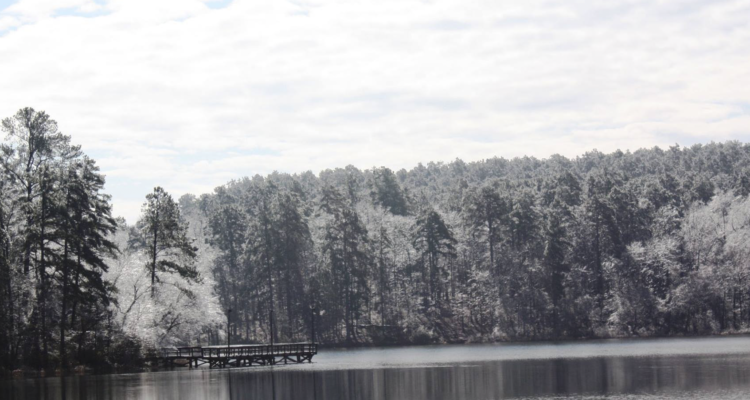by Robert Marlin
It’s on the western edge of the Pineywoods ecoregion, near its border with the Post Oak Savannah ecoregion inside what is known as the Sabine River Basin. Early explorers to Texas wrote back to their families about the area, describing it as an open forest with tall grasses and wildflowers. As settlers began making homes there, the land began to change. Wildfires burned through the area every few years, reducing the number of woody understory plants. Those early settlers put out the fires to protect their homesteads, and over the course of decades, woody plants spread, providing shade for the ground and essentially changing the nature of these East Texas woods.
Near the close of the nineteenth century, in 1895 to be precise, the Texas Legislature became concerned about protecting wildlife habitats and the natural resources of Texas. They began by first creating the Fish and Oyster Commission to regulate the coastal fishing industry. Next, in 1907, the Game Department was added to expand protection to other wildlife throughout the state. In 1923, the State Parks Board was created for the purpose of establishing parks dedicated to outdoor recreation and to provide management for sites of historic significance. During the 1930s, the Works Progress Administration was formed to alleviate the unemployment problem facing the nation because of the Great Depression brought about by the stock market crash of 1929. One of the subgroups that sprang up under the auspices of the WPA was the Civilian Conservation Corps (CCC).
When the CCC arrived in Northeast Texas in 1935, they found a place with few remaining trees due to logging and clearcutting for farming. There were few native plants remaining. It was, however, considered to be an ideal location for building a lake and establishing a state park suited to recreation. Two separate families deeded adjoining parcels of land to create a new state park. It would be an ongoing project that would provide employment to a few hundred local people in the short term. In the long term, the project would be a legacy for future generations. The CCC went to work to restore the land to its natural state. First, they dammed an unnamed creek to create the lake. Within a few months, the lake began to take form. By the time the project was completed, the lake covered nearly sixty-four acres, including a spring-fed portion of the land that formed a beachfront and is now a swimming area. When the park was completed, it encompassed a total of 985.5 acres located just two miles north of Tyler on FM 14. Tyler State Park officially opened in 1939, giving local residents and tourists a playground for camping, picnicking, hiking, fishing, and swimming.
For the first twenty-four years of its existence, Tyler State Park was managed by the State Parks Board and the Game and Fish Commission. In 1963, those organizations were merged to form the Texas Parks and Wildlife Department, which is controlled by a three-member Texas Parks and Wildlife Commission. Today, Tyler State Park is operated and managed by the Texas Parks and Wildlife Department, just one of more than eighty state parks in Texas.
Whether visiting for an afternoon or spending a week, there is much to do at Tyler State Park. You can rent a boat or bring your own. However, there is a speed limit of five miles per hour for all boats with motors. In addition to boating, fishing is allowed, and the lake is filled with crappie, perch, catfish, and bass. The park has three fishing piers and a boat ramp. Visitors can borrow fishing rods, reels, and tackle boxes through the TPWD Tackle Loaner Program. A fishing license is not required to fish from shore in a state park. Swimming is allowed during the daylight hours but is prohibited from sunset to sunrise. Swimming or diving from and directly around the fishing piers and boat ramp is prohibited. Divers must check in and out at the park headquarters during business hours and must display a floating dive flag in the area where they are diving. The floating dive flag can be borrowed from the park headquarters.
The park also has more than thirteen miles of trails. You can take a virtual tour using the parks’ Interactive Trail Map. Exploring the trails is an excellent way to study the flora and fauna within Tyler State Park. Animals indigenous to East Texas that are abundant in the park include white-tailed deer, raccoon, squirrel, fox, coyote, and opossum. It is very likely you will run across an armadillo or even a skunk while wandering a trail. There are also many reptiles and amphibians living in the park, which include many varieties of snakes, lizards, salamanders, frogs, and toads. Bird watchers have the opportunity of spotting as many as 200 species of birds inside the park. Regulars, such as pine warbler and brown-headed nuthatch, can be seen year-round. Whooping Cranes have been spotted flying over the park during their spring migration to Canada in late March and early April, and during their migration to South Texas in mid-September.
The park is equipped with public restrooms and hot-water showers are available for overnight guests. There is also a park store where necessities and souvenirs are available for purchase. The camping accommodations include facilities for RVs, pitching tents, cabins, and screened-in shelters.
The park is open year-round, from Memorial Day to Labor Day, daily and from the Tuesday after Labor Day until the Friday before Memorial Day, the park is closed on Tuesday and Wednesday. Day use hours are from 8:00 AM until 10:00 PM. Park office hours are from 8:30 AM until 4:30 PM. Admission to the park is $6 per day per person for ages thirteen and older. The park does not have a gate and an honor box located at the park office is used to collect camping and day use fees when the office is closed.


